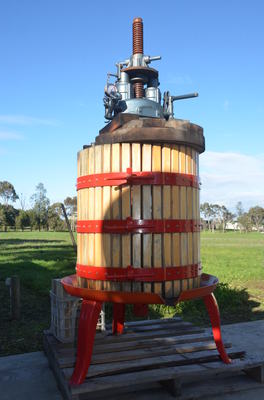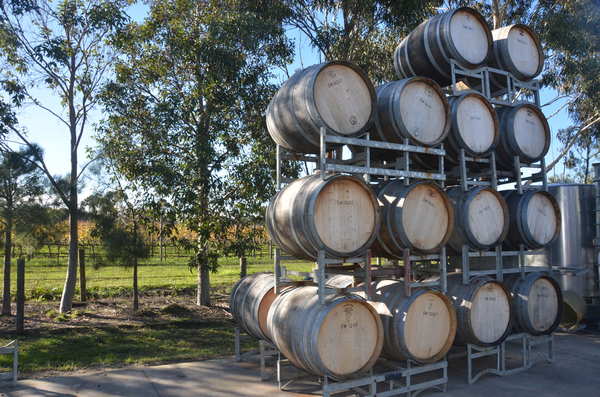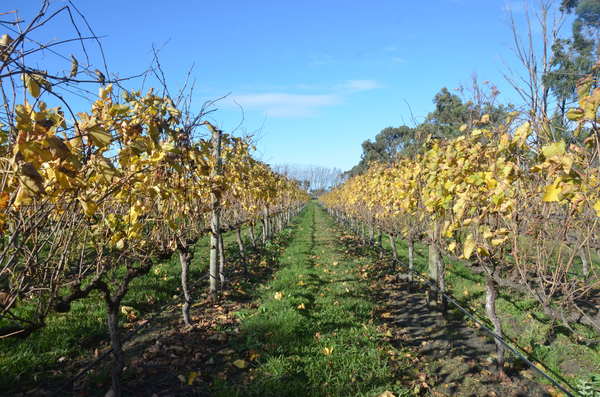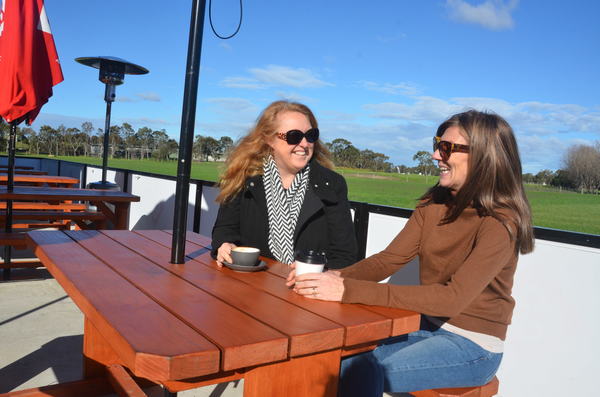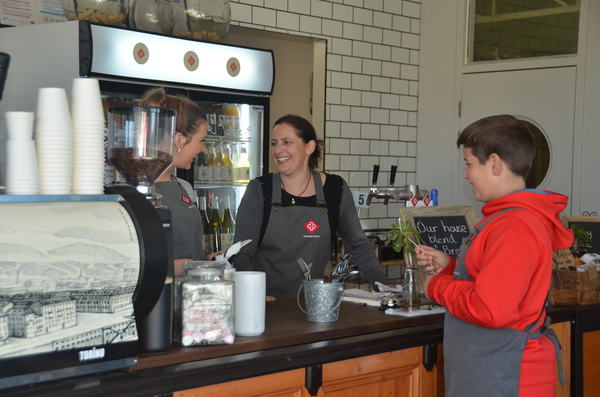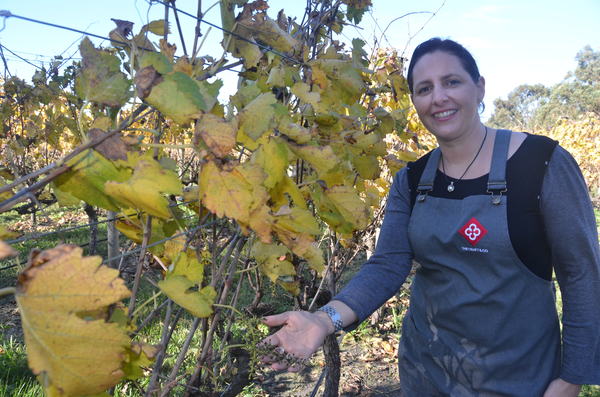
Tucked away on Riverend Road in Bangholme is Greater Dandenong’s only winery. But the Craft and Co Farm is about much more than wine. Lisa Baggio spoke to Casey Neill about creating a “little sustainable ecosystem” based on homemade food and beverages.
The Craft and Co concept all started when Lisa Baggio’s parents-in-law came to Australia from Italy.
“Paul’s dad Lou was working at Ford and all his friends and colleagues kept asking him ‘can you make me wine equipment?’,” she said.
Lou started making vats and presses for them and eventually opened a shop in North Melbourne stocking supplies for homemade food and beverages.
“My husband took that concept further and decided he wanted to branch out into commercial winemaking equipment,” Lisa said.
Australia’s drought created a wine glut so Paul diversified to breweries and packaging and water plants, and today he’s added coffee roasting and meat curing equipment to his product range.
He opened The Craft and Co in Collingwood in December “as a showroom for his customers”.
He and Lisa opened the doors to the Craft and Co Farm on Riverend Road in Bangholme just two weeks before the Gazette popped out for a visit on 23 June.
“We have been inundated by locals,” Lisa said.
“The response is that there’s nothing in the area like this. They enjoy the space and the food and the atmosphere.”
They served up meals to 70 diners on the Sunday and 300 across the fortnight.
“We didn’t expect that. We thought we’d have one front of house and one back of house and that’s it,” she said.
“From day one I’ve been here the whole time and we’ve got casuals we’re training tomorrow and reinforcements as well.
“There was only three of us on Sunday and we didn’t stop all day.
“There is a real sense of community here so everybody knows each other.
“I think they like that.
“We’re reasonably priced and I think that they enjoy that the food is house-made.”
The Collingwood sister site features a brewery, a still from Germany, a coffee roaster, cheese and meat-curing rooms, a delicatessen, restaurant, cafe and function space.
“The idea behind this place is that everything we grow and produce here will be split between here and Collingwood,” she said.
“We’ve got the winery out the back so we’ll produce wine to be bottled and distributed at Collingwood here.
“We’re preparing the soil for a massive vegetable garden, a hop garden for the brewery …
“All their waste will come back here for our chook feed and compost.
“We’ll be this little sustainable ecosystem.
“We’re also intending to have livestock here as well.
“We’ve got a licence for a couple of pigs that will eventually go to the meat room for salami.
“We’ll have dorper sheep to keep the grass maintained and chooks for eggs.
“We eventually hope not to have fruit orders.”
Lisa plans to introduce workshops and “grand-scale events” down the track with salami making classes, an Octoberfest celebration and a sausage festival ideas on the table.
“There’s already a cellar door and there’s wine and beer tasting,” she said.
“You can do a tour of the winery and the vines.”
The Nine Dragons Horse Club next door is going to start trail rides in spring.
“The trail ride will finish through our vineyard,” Lisa said.
“They’ll tie up the horses here and included in the trail ride will be a lunch.
“We want this to become a destination.”
The Craft and Co crew currently brew a stout and a pilsner in Collingwood and hope to one day brew beer in Bangholme, too.
“We have to grow our own hops before we can even think about it,” Lisa said.
But the wine is already on its way.
“Our 2016 vintage, all the grapes are from here. It’s in barrels and tanks at the moment,” she said.
“We didn’t have access to the vines until this year.
“We have a nero d’aovla we produced here with grapes from Heathcote.”
Craft and Co’s winemaker Rory Lane worked with the Baggio’s years earlier.
“We have these little shops that make home-made wine,” Lisa said.
“The little Italian men would come in with samples and he would test it by mouth feel and analysis.
“He could correct their wines.
“He went on to become a commercial winemaker, a very successful one.
“The landlord here told him he didn’t want to keep looking after the vines.
“Rory contacted my husband Paul and said ‘would you be interested in taking over the lease for the vineyard?’.
“We were setting up the Collingwood site at the time.
“It just seemed like the most natural progression.
“It’s really paddock to plate and paddock to glass.”
Lisa said the winery was open to contract wine makers.
“They bring their own grapes but they use our facilities,” she said.
“We’ve got two at the moment but we’d like to expand that to four.”
Rory said a 2016 viognier and a 2016 pinot noir would be available later this year.
“There’ll be provably a blend of grenache and mourvedre and have some shiraz in that. That’s yet to be determined, that blend,” he said.
“The rest of the wines won’t be released until early next year, but there’ll be a 2016 shiraz, and a 2016 cabernet, a 2016 tempranillo.”
A giant clay pot stands out from the barrels and stainless steel tanks.
“It’s just a different type of storage vessel, or wine maturation vessel,” Rory said.
“Rather than maturing it in wood or stainless steel it’s clay, terracotta. They’re made in Tuscany in Italy.
“The different vessel that you mature it in, they all have different porosities.
“Stainless steel doesn’t let any air through. Wood lets quite a bit through, depending on the age of the wood.
“The older the barrel, the less it lets through because, essentially, they get clogged up with wine.
“The wine soaks in from the inside to the out and they become a bit less porous as they get older.
“Newer barrels tend to be a bit more open.
“It also depends on the vessel’s size as well.
“If you think about the surface area compared to the volume of the liquid, something like these barrels here, which are 225 litres, that has quite a lot of surface area compared to the volume, but the bigger the vessel the smaller the surface area of that vessel in contact with the liquid.
“The bigger the vessel is, typically the smaller the transfer of air through that vessel.
“Big containers oxidise a lot slower, smaller containers oxidise a lot quicker.”
Rory said the terracotta amphora held 800 litres.
“If that was a wooden barrel it would be considered quite a big barrel,” he said.
“It will be quite a slow rate of maturation but not as slow as a stainless steel tank of the same size.”
He’s expecting it to add a slightly different flavour to the wine.
“Because the terracotta is not very uniform and it’s all hand-made so the thickness varies a little bit, they seal the inside with beeswax and you do get a very slight beeswax character that comes through in the wine,” he said.
“The flavours tend to be a bit more earthy.”
There are 11 grape varieties growing across the 14-acre vineyard.
“This is all reclaimed swamp land originally, so there’s plenty of water, which is good for growing grapes,” Rory said.
“The soil is quite heavy and clay-based but because we’re quite close to the beach there’s also quite a bit of sand in the soil too, and so the balance of that sand and clay is really important in the way that it holds water.
“If it’s got too much clay it holds too much water, and if it’s got too much sand it doesn’t hold enough.
“So the balance is quite good. There’s good drainage but there’s enough clay in there to hold a good amount of water.
“It pretty much doesn’t need irrigation at all.”
The ground water also produces big canopies with lots of foliage.
“The more foliage, the quicker things ripen,” he said.
“So we do have to manage the amount of foliage, make sure that things don’t ripen too quickly.
“All in all, for what you wouldn’t consider to be typical wine-growing country, it does quite well with a number of different varieties.”
Rory is looking forward to playing with the different varieties to create a range of blends.
“That’s the way the vineyard was originally set up, to produce blends and classic blends that you might get in France,” he said.
“There’s shiraz there but also viognier, and in one particular regional in the northern Rhone Valley they blend a little bit of the white variety, viognier, with the shiraz.
“That helps to lift perfume and lighten the wine a little bit.
“There are certain pigments in white grape skins that almost paradoxically help to fix the colour in red grape skins, so if you mix a bit of white grapes in with the red grapes the colour fixes better.”
He said there were three different cabernet varieties plus a merlot that would grow together in Bordeaux.
“So you could do a northern Rhone Valley blend, you could do a southern Rhone Valley blend grenache, mourvedre and shiraz,” he said.
“You could do a Bordeaux-style blend of the cabernet varieties.
“Then there’s pinot noir as well, which has always typically been a straight variety.
“So for me it’s interesting to see what different proportions of the different varieties work best.”
Rory said each variety would differ each year.
“With lots of different varieties it means that one year the shiraz might be better, the next year the cabernet might be better, but with so many different varieties to play with we’re going to get a few that are going to be great every year,” he said.
“There’ll be an overall consistency of quality.
“Which variety ends up being the best on average I’m not sure yet.
“We’ll have to have a few more years’ experience, but I think the shiraz is going to be pretty good here, I’m very happy with that this year.
“Even though we’re a bit further north of the Mornington Peninsula, we’re not that far from Mornington so the pinot’s going to be pretty good.
“The grenache is a real dark horse, that’s my favourite at the moment.
“It will produce a slightly lighter style but it’s really aromatic.”

